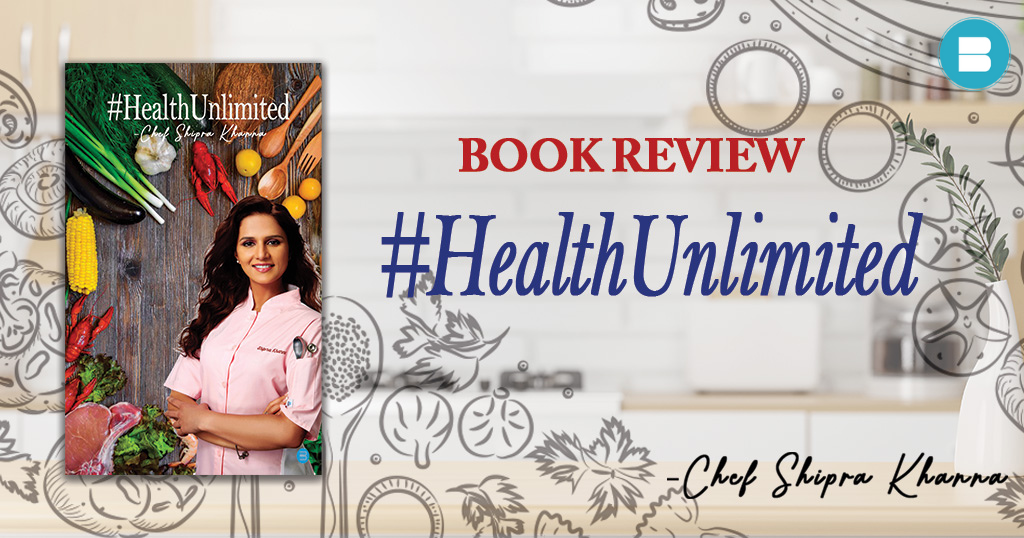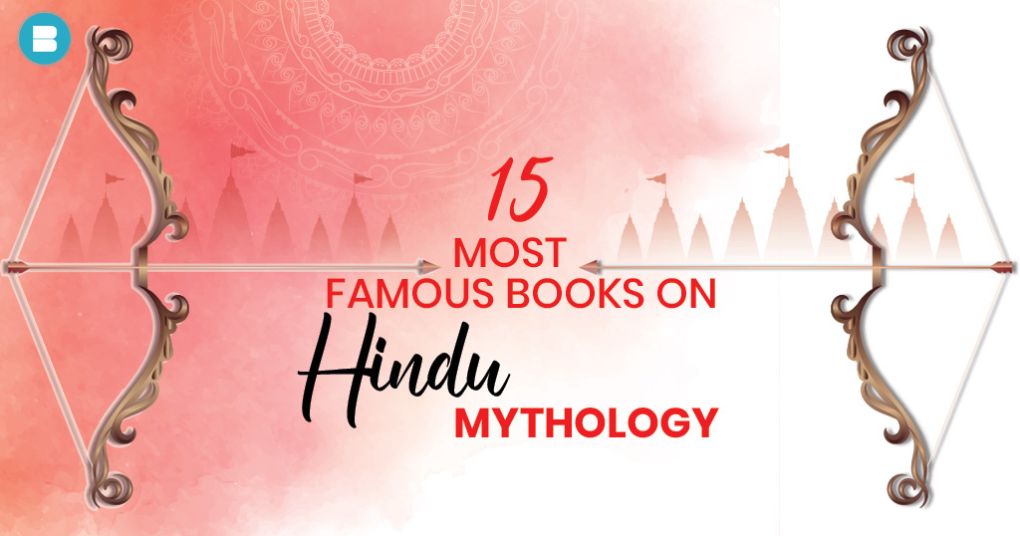
15 Book on Hindu Mythology Everyone’s Talking About
Learn & Note down the list for best books on Hindu Mythology. Mythologies have been a huge part of our lives. Ever since we were kids, our parents told us stories about God and Goddesses and how beautiful their world was… As a reader, it is a mystical world that attracts our attention – the world, the characters, the powers, the emotion, and the lessons. Read: Who is Annie Ernaux? Things to know about Nobel Prize Winner Here is a list of 10 books on Indian/Hindu Mythology that will blow your mind – Mahabharata by Vyasa Ramayana by Valmiki The Immortals of Meluha by Amish Tripathi The Palace of Illusions by Chitra Banerjee Divakaruni The Krishna Key by Ashwin Sanghi Asura : Tale of the Vanquished – The Story of Ravana and His People by Anand Neelakantan The Pregnant King by Devdutt Pattanaik Lanka’s Princess by Kavita Kane Dharmyoddha Kalki by Kevin Missal The Pandava Series by Roshani Chokshi 1. Mahabharata of Vyasa by M.N. Dutt The Mahabharata is one of the two major Sanskrit epics of ancient India, the other being the Ramayana. It describes the Kurukshetra War between two groups of cousins, as well as the destinies of the Kaurava and Pava princes and their successors. It also includes philosophical and devotional material, such as a study of the four “life aims,” or purusartha. The Bhagavad Gita, the narrative of Damayanti, the story of Shakuntala, the story of Pururava and Urvashi, the story of Savitri and Satyavan, the story of Kacha and Devayani, the story of Rishyasringa, and a shortened version of the Ramayana are among the major works and stories in the Mahabharata. You may also read: Aravind Adiga Books of All Time | BlueRoseOne Books on Hindu Gods and Goddess 2. Ramayana by Valmiki The Ramayana is one of the world’s largest ancient epics. It has about 24,000 verses (mainly in the Shloka/Anustubh metre), separated into seven Khanda (sections), the first and seventh of which are later additions. It belongs to the Itihasa genre, which includes accounts of previous occurrences (puravtta) mixed with lectures on the purposes of human life. The Ramayana had a significant impact on later Sanskrit poetry as well as Hindu life and culture. Rama, Sita, Lakshmana, Bharata, Hanuman, and Ravana are all central to the cultural consciousness of the South Asian nations of India, Bangladesh, Nepal, Sri Lanka, and Cambodia, Indonesia, Malaysia, and Thailand. Its most significant moral influence was the role of virtue in a citizen’s life and in the goals of the construction of a state or a functioning community. You may also like: Top 10 Real life Stories to Read Online Books on Hindu Gods and Goddess 3. The Immortals of Meluha by Amish Tripathi The Immortals of Meluha is Amish Tripathi’s debut novel, as well as the first in the Amishverse and the Shiva Trilogy. The story takes place in Meluha and begins with Shiva’s arrival. The Meluhans regard Shiva as their saviour Neelkanth. Shiva resolves to help the Meluhans fight the Chandravanshis, who have joined forces with a cursed Naga; but, throughout his journey and the ensuing battle, Shiva realises how his decisions reflect who he aspires to be and how they have devastating consequences. “Myths are nothing more than jumbled memories of a true history, buried beneath mountains of earth and ignorance,” Tripathi claims. The novel contains characters from Hindu literature as well as those created by Tripathi; however, the former do not inherit all of their classical features. You may also read: Top 10 Ebook Selling Platforms for Authors in 2025 Books on Hindu Gods and Goddess 4. The Palace of Illusions by Chitra Banerjee Divakaruni The novel is a retelling of the Hindu epic Mahabharata from the perspective of Draupadi (Panchaali), a woman living in a patriarchal culture. “Smart, resilient, and courageous Panchaali, born of fire, marries all five of the famously heroic Pandava brothers, harbours a secret love, endures a long exile in the wilderness, instigates a catastrophic war, and gradually learns the truth about Krishna, her mysterious friend,” according to Booklist. You may also like: The Importance of Professional Editing in Self-Publishing Books on Hindu Gods and Goddess 5. The Krishna Key by Ashwin Sanghi The Krishna Key is the third novel by Indian novelist Ashwin Sanghi, published in 2012. The plot revolves around a history professor who must establish his innocence in the face of a murder charge. Sanghi claimed that he “wanted to write a story in relation with the Mahabharata, but not a retelling of the epic, which has already been done,” and that he “had to be exceedingly cautious in dealing with this matter since we put a premium on personal conviction and religion.” Krishna was chosen as one of the book’s themes because he is a “perfectly grey character.” You may also like: Savi Sharma Books | India’s Bestselling Inspirational Author Books on Hindu Gods and Goddess 6. Asura : Tale of the Vanquished – The Story of Ravana and His People by Anand Neelakantan Anand Neelakantan’s first novel is Asura: Tale of the Vanquished. On May 14, 2012, Leadstart Publishing released it. This mythical fiction tells the Ramayana story through the eyes of Ravana and a common Asura, Bhadra. The book seeks to emphasise the vanquished’s voice as opposed to the victor’s narrative of Ramayana that is popularly recognised. It delves into Ravana’s hardships and the events in his life that shaped him into the man he became, attempting to establish a link between the social construct as it may have existed and varied at the time and the well-known incidences detailed in the Ramayana mythology as it is known today. You may also read: Book Review: Student Politics of IIT Madras by Shushant Jaswal Books on Hindu Gods and Goddess 7. The Pregnant King by Devdutt Pattanaik Devdutt Pattanaik published The Pregnant King in 2008. It tells the story of Yuvanashva, a childless king who takes the magical elixir meant to make his queens pregnant by accident. It is set against the…
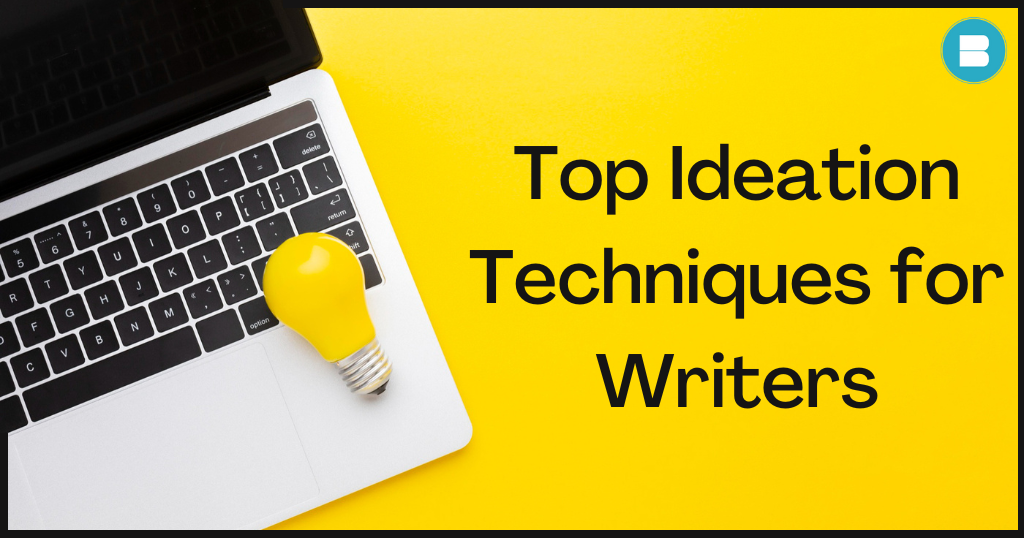
Best Ideation Techniques for Writers that’ll Blow Your Mind
Looking for Ideation techniques for Writers? Novel and short story ideas pour like water from a fountain for certain people. However, for the rest of us, creative writing is a more deliberate process. That is why Ideation/Brainstorming is important. Ideation refers to the entire creative process of developing and expressing new ideas. Ideation is creative thinking that helps a writer to outline the important elements of their book, how to structure it, and what will be the routine. It includes coming up with new ideas, developing current ones, and determining how to put new ideas into action. Read: What are the main elements of creative writing? Brainstorming is an excellent method for generating a large number of ideas that you would not be able to develop by simply sitting down with a pen and paper. But being honest, authors acquire their inspiration from a variety of sources. Newspapers, television, movies, other books, overheard conversations, dreams, nightmares, individuals we’ve met, loved, despised, and married. And sometimes we have no clue as to where an idea came from! While there are a few bizarre ideas to start brainstorming with – Listen in to a conversation – well you don’t know them, they don’t know you but it could still give you an idea. Don’t wait up for the idea to strike – you can’t just sit and read or watch movies, you need to get up and get going. Do your daily things, meet people, talk, act human because honestly writers aren’t one. And slowly your brain will get an idea for you to exploit. Think of a person you don’t like – what are the chances you’d like them? What would make them likable, if they were opposite to how they are today, how would their life be…. Think about it, my fellow writer. A bit boring place to start from but Writer’s Digest says scroll through your junk mails – I mean it would definitely have some things to start an interesting story from. You may also read: Additionally Synonyms and Antonyms for Students & Writers Read: Who is Annie Ernaux? Things to know about Nobel Prize Winner But not everyone loves bizarre so if you’re looking for innovative ideas but don’t know where to start, here are some suggestions to get you started: writing a thriller, a love story, a murder mystery, and science fiction – You can start from anywhere. Characters, place, conflict, personalities, villain, family, friends – wherever you want. Your ideas need somewhere to start so do what we do best – pick one thing and exploit it till the moment you get what you want. Create a fictionalized version of a true story. Reading the news, historical books, or viewing documentaries might provide you with fascinating narrative ideas. You can even draw inspiration for a fictional novel, short story, or script from an existing nonfiction work. In a broader sense, you can find inspiration from a podcast, a poem, or even a self-help book. Write about a personal experience. Many authors begin their writing process by reflecting on an event from their own lives. It could provide you a lot of ideas for what to write about. Examine the plot of a book you like. Reread one of your favorite books, whether it’s a current favorite or the first book you fell in love with as an adult. Consider what makes the storytelling work for you when you reconnect with the plot. Is there a storyline twist on every page of the book? Is it a character study that unfolds gradually? What components might serve as inspiration for plot ideas for your own story? You can start from anywhere. Characters, place, conflict, personalities, villain, family, friends – wherever you want. Your ideas need somewhere to start so do what we do best – pick one thing and exploit it till the moment you get what you want. Keep imagining scenarios. “What if…?” you might wonder. Consider a well-known historical era and consider what might happen if a few essential aspects were modified. This fiction writing technique is the foundation of the alternate history fiction genre (also called speculative fiction). Alternate history fiction is a type of fictional narrative in which the author changes one or more significant components of documented history and then creates a plot based on this modification. Begin writing as soon as you can. Planning is necessary, but don’t let excessive planning distract you from the task at hand, which is actually writing your novel. The initial draft of your first chapter may be bad, and it may need to be completely redone once you’re finished, but it’s critical to get started before you become paralyzed by second guessing.
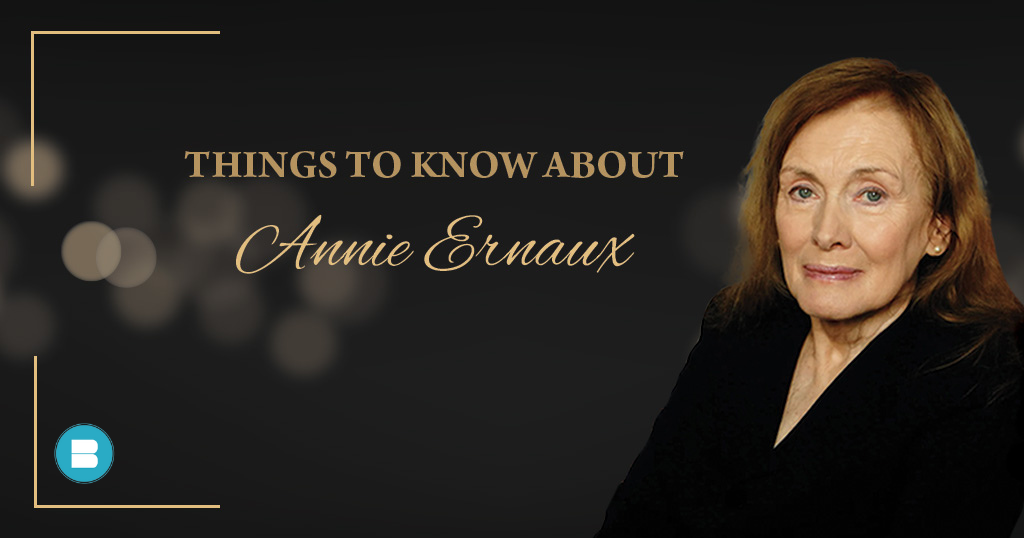
Who is Annie Ernaux? Things to know about Nobel Prize Winner
There are all types of writers in this world – some are known for their writing style, some are known by their thoughts and opinions, some are known because of their quality content, while some are known because of their characters. But not everyone leaves their imprints on your mind, Annie Ernaux, however does. Read: Book Review: #Healthunlimited a Book by Chef Shipra Khanna Ernaux is just the 18th woman Nobel laureate in literature and the first French woman to receive the honour. The academy praised her “for the courage and clinical acuity with which she uncovers the roots, estrangements and collective restraints of personal memory”. Ernaux was born in 1940 and raised in Yvetôt, Normandy. Annie Ernaux is the only child of working-class parents who managed a cafe-cum-grocery, and her childhood was marked by class conflicts both inside and outside the family home. Ernaux received her secondary education at a private Catholic girls’ school, which exacerbated socioeconomic divisions between her and her parents, particularly her father. She grew up in a socially divided society made her ashamed of some allegedly disagreeable aspects of her childhood. Her childhood memories are filled with growing up in a working-class culture, music, and alluring romance novels from her mother’s collection. With her immense interest in classic French texts, she studied literature at Rouen university and became a secondary school teacher. In college, she penned her first novel. Publishing Houses, however, rejected it because it was “too ambitious,” she told the New York Times’ Laura Cappelle in 2020. She didn’t pick up a pen again until she was in her 30s, married with two children. Read: Get to know what are the main elements of creative writing. In 1970s, she turned her professional path to becoming a full-time writer. As a writer, she realised that neither the French literature she read at home nor the schools she learned and later taught in mirrored her daily life. As she dived more and more in the life of being a writer, Ernaux adopted the writing style that has been synonymous with her, known as “l’écriture plate” (literally “flat writing”). The chairman of the Nobel Literature committee, Anders Olssen described Ernaux’s work as “uncompromising and written in plain language, scraped clean”. A mission underpins this style to writing. Ernaux feels that writing about the self invariably entails writing about a sociopolitical environment, which broadens the representativeness of her personal experience. She aspires to write into literature the experience of the French working-class by simply writing about her own experiences. Her literary approach often includes self-reflexive remarks in which she discusses the difficulties she confronts in transforming lived experiences into literary form. Her success stems in part from her transparency and sense of writer-reader connection. Her bravery in examining and deconstructing general preconceptions is mirrored in the subject of her work. Read: Here’s a list of Top 10 Online Dictionaries of all time. Annie writes on a variety of taboo subjects, such as her backstreet abortion (Cleaned Out and Happening, which was recently adapted into a film), sexual intimacy and consent issues, breast cancer, and her deceased sister (L’Autre Fille). Mentioned below are some of Annie Ernaux best works – Cleaned Out (1974) Shame (1997) Happening (2000) Getting Lost (2001) The Years (2008) A Girl’s Story (2016) 1. Cleaned Out (1974) It was Annie’s first book, a novel about a young woman who’s life mirrored with Ernaux’s as she has an illegal abortion while reflecting on her childhood and the decisions she made. Annie Ernaux best books in English 2. Shame (1997) Shame presents the compelling narrative of the twelve-year-old girl who would become the author, as well as the one horrible experience that will haunt her for the rest of her life. With the emotionally rich voice of great literature and the scientific eye of a diamond, Annie Ernaux presents a striking reflection on experience and the ability of violent memory to endure through time and affect one’s life direction. Annie Ernaux best books in English 3. Happening (2000) This story is all about Annie’s own story. She was a single 23-years-old who learnt about her pregnant in 1963. She felt shameful; she knew the fact that she couldn’t keep the child as it would affect her family both financially and socially. Annie Ernaux best books in English 4. Getting Lost (2001) Getting Lost is Annie Ernaux’s diary during the year and a half she spent having a covert love affair with a younger, married man, an attaché to the Soviet embassy in Paris. It’s a poignant portrait of a woman caught between love, desire, and despair. Annie Ernaux best books in English 5. The Years (2008) This was Ernaux’s breakthrough novel for many readers outside of France, and it was nominated for the International Booker Prize. It is also an autobiographical generational chronicle of postwar France. Annie Ernaux best books in English 6. A Girl’s Story (2016) In this book, Ernaux revisits a fifty-year-old incident, her horrific first sexual encounter and its long-term consequences. Ernaux discusses her 18-year-old self, who was devastated by a meeting with an older man, and how that event shaped her identity as a writer and a woman. Annie Ernaux best books in English Read: List of most prestigious literary awards in 2022 When she found out that she won the Nobel Prize in Literature award, this is what she said – “I am very happy,” she said in French. “I am proud. And that’s it.” And to date she has written over 20 books since the 1970s.
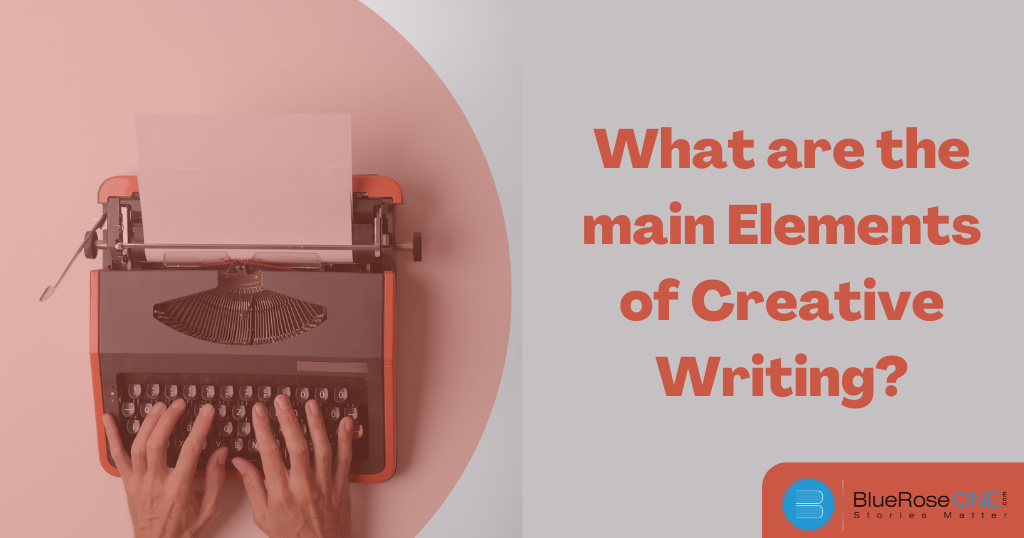
What are the main elements of creative writing?
As the name implies, creative writing is a type of writing that extends beyond the traditional boundaries of normal, professional, academic, or technical writing. Instead, it encompasses a wide range of genres and styles in both fiction and nonfiction writing, including storytelling, playwriting, poetry, prose, journalism, and more. Read: List of top 10 Online Dictionaries for Writers. Though the definition is somewhat ambiguous, creative writing is generally defined as any type of writing that is original and expressive of oneself. It is usually distinguished by an emphasis on narrative craft, with an emphasis on elements such as character development, narrative, and plot, infusing its structure with imagination, invention, and story. In this sense, creative writing can be defined as any writing of contemporary, original composition that is not bound by standard conventions and employs a wide range of elements in its craft. In an academic setting, creative writing classes are usually divided into fiction, poetry, or scriptwriting, with a focus on writing in an original style that is not defined by pre-existing structures and genres. Here’s the list of top 9 elements of creative writing- Character Dialogues Narration Setting Structure Conflict Plot Point of views Theme • Character Characters are essential in creative writing. While it is possible to write a book creatively in the second person, you must still develop the character in order to tell the story. Character development is the discovery of who a character is and how they change throughout the course of your story. Readers should be able to fully comprehend your main characters from beginning to end. Characters are either round or flat, or dynamic or static. You may alsso like: 10 Effective Strategies to Improve Your Reading Habits Flat characters are two-dimensional in the sense that they are simple. Round characters, on the other hand, are multifaceted beings with many diverse traits that evolve, sometimes to the surprise of the reader. Dynamic characters fluctuate during the plot, whereas static characters remain the same throughout. • Dialogues Your characters can only be explained to an extent – to make your story more dynamic, the need of dialogues is abundant. Dialogues help people know the varieties of emotion in which the writer would convey certain sentences through a dialogues; also, it sets the characters’ personalities strongly. You may also read: Aravind Adiga Books of All Time | BlueRoseOne • Narration The narration helps you understand what all is happening together. Writing the scenes itself, the flesh of the world you’re building, is another important aspect of fiction writing. Knowing what needs to be communicated is one of the most crucial writing methods in this. What are the folks wearing, and where are they from? What information does your target audience require? What can you omit without causing harm? A lot of unnecessary information slows down the pace of your piece. • Setting The literary element setting involves the historical moment in time and geographic area in which a story takes place, and it helps create the main backdrop and mood for a story. Setting has been referred to as narrative world or milieu to incorporate a backdrop (particularly society) outside of the story’s immediate surroundings. Setting elements may include culture, historical period, location, and time. Setting, along with story, character, topic, and style, is regarded as a key component of fiction. You may also read: What is Ghostwriting? A Complete Guide for Beginners You may also like: 100+ Adjectives Begin With S (With Examples & Definitions) • Structure Will you compose an ode or a sonnet, a ballad, a novel, a short tale, or a limerick? And, once you’ve made that decision, how do you deal with the particularities of these forms? Furthermore, how and why did you make that decision? The spacing, paragraph, or verse structure all contribute to the reader’s aesthetic experience. The structure of your text is the font play to display emphasis, distinct elements, or changes in different features. • Conflict Creating conflict is the cornerstone to effective narrative. The conflict in a story is established by the writer soon after the main character is introduced. Conflict is the catalyst for action and the beginning of a story. Every writer should understand how to create interesting conflict. Read: Sahitya Akademi Award: History, Nomination Process, History. You may also like: The Selection Series in Order: Full Book Guide You can use six different sorts of conflict to move your story: Character vs. self Character vs. character Character vs. society Character vs. supernatural Character vs. technology Character vs. nature • Plot What distinguishes creative writing from other types of writing is that the former always includes a plot of some kind – and a distinctive one. Yes, remakes are called creative writing; but, the majority of creative writers build their own plot based on their own unique ideas. There is no story without a storyline. You may also read: How to publish a Book in 2024 | Complete Guide • Point of Views You can express yourself in a variety of ways. However, the two most prevalent in creative writing are first person and third person. First Person – The narrator is the major character in this point of view. This means that you will read sections beginning with “I” and recognize that the primary character is narrating the story. Second Person – This point of view is most typically employed in educational writing, such as this blog post, rather than creative writing. It’s second person point of view when you see the word “you” and the narrator is speaking directly to you. Third Person – There are several versions of this point of view. Third person limited, third person many, and third person omniscient are all options. The first is commonly encountered.When speaking about the character you’re following, the narrator in third person limited uses “he/she/they.” Nobody else knows that character’s inner thoughts and feelings. It’s similar to first person, but instead of the character delivering the story, a narrator does.Third person multiple is similar to limited in that the narrator now knows various characters’ inner thoughts and feelings.The last form, third person omniscient, occurs when the narrator continues to use “he/she/they” but has complete…
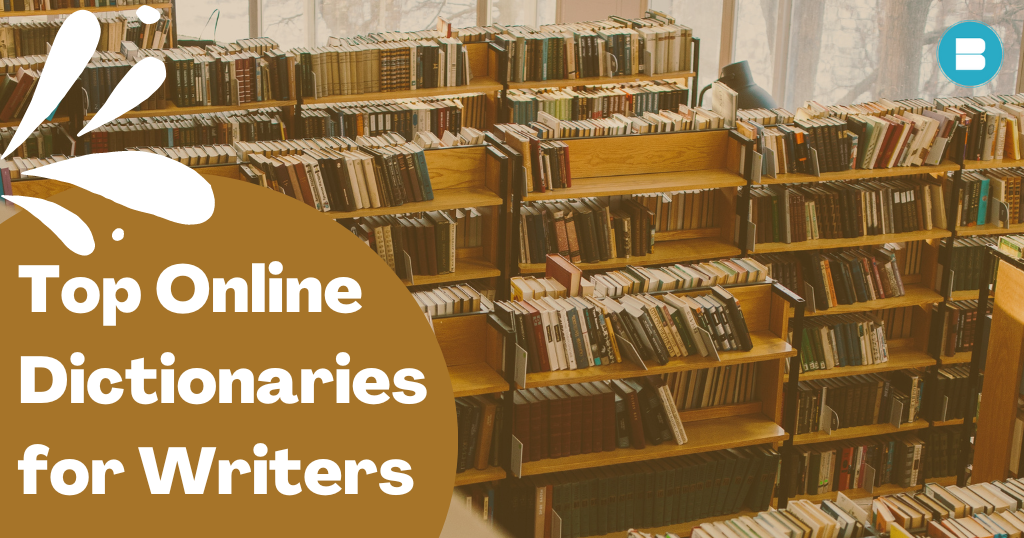
Top 10 Online Dictionaries for Writers
We writers should be especially proud of our ability to use language. Particularly in the flow of words that eventually sew a full story together, writing is said to be a skill that organically develops. The best online dictionaries, some of our oldest friends, come to our aid when we find ourselves at a loss for words and unable to put that perfect statement together. Read: Here’s the list of most prestigious literary awards in 2022 There are several dictionaries on the Internet, each with its own special features and offerings. Dictionaries have adopted a new, highly updated shape. Here are the top 10 websites for dictionaries that every writer should look up: Grammarly Rhymezone Google Translate The Free Dictionary Thesaurus Wordnik Urban Dictionary Merriam-Webster Netlingo BrainyQuote 1. Grammarly As its name implies, Grammarly is a free or paid online editing application that also functions as a grammatical dictionary. The paid version improves all those features across every online word document you are writing on, be it emails, blog posts, or social media posts. While the free version allows you to quickly check for grammar issues and rephrase incorrect sentence structures, it does not offer all of those features. More than 250 different typos and phrase faults can be fixed with Grammarly. The writers who spend the most of their time writing online should utilise Grammarly. Therefore, for the best written product, be sure to run a large collection of blog posts using Grammarly. You may also read: About the Author Sudha Murthy: Inspiring Life and Literary Legacy 2. Rhymezone It is unquestionably among the best and most well-liked dictionaries now available online. Although it is incredibly quick and simple to search words, it offers much more than that. You can discover homophones, antonyms, and even synonyms. Additionally, it works incredibly well while composing both poetry and prose. When a term is input, it has the capacity to retrieve images, documents, and multimedia relating to that word. Rhymezone can be configured to automatically carry out your most often utilised tasks. You may also read: Amazon Ads for Authors: A Step-byStep Guide to Boosting Book Sales 3. Google Translate Google Translate, which is pretty much obvious from its name, is the kind of dictionary you need to always have open in case you need a rapid translation for a word you just learned that is in a different language. If you’re a writer who enjoys travelling for inspiration, Google has created a dedicated app for the dictionary that allows you to translate words and sentences while you’re on the go. Speech translation, text-in-image translation, and language translation from any other app or text are all cool features. Consider writing for a regional audience. It is common knowledge that creating a more personal connection with your readers requires using their language and using colloquial words. If you need assistance translating a term from English to your local tongue, Google Translate is the best dictionary to use. You may also read: About the Author Sudha Murthy: Inspiring Life and Literary Legacy You may also like: Left Behind Series Books in Order: Where to Begin 4. The Free Dictionary You can quickly establish The Free Dictionary as your go-to resource for all things witty. It is one of the most intricately constructed online dictionaries currently available. The Free Dictionary also keeps you entertained with fun word builder games and real-time word searches. The Free Dictionary is packed with many word search possibilities, including a thesaurus, foreign languages, Wikipedia searches, synonyms, acronyms, idioms, and phrases. You can sign in to the website using your email or social media account if you want to utilise this dictionary to the fullest degree possible. Once logged in, you can alter the material on your home page to suit your preferences and writing style. You may also read: List of Top 10 Nikita Singh Books of All Time 5. Thesaurus A supplement to one of the most expert online dictionaries, dictionary.com, is thesaurus.com. Every term in the English language has a thesaurus that displays all potential synonyms, antonyms, and related words in a very neatly designed User Interface. Even a brief Did-You-Know section that explains the word’s etymology is included. When you find yourself using the same term again throughout a series of paragraphs, it is useful to consult a thesaurus. You can read, comment on, and interact with the blog posts in the dictionary to learn more about the wonders of the English language. You may also like: How to Publish a Book? | Publish Your Book | BlueRoseOne 6. Wordnik Wordnik is a non-profit organisation that is constantly updating and refreshing with new terms in the English language, making it more than just another very large online dictionary. Every term has more than one definition provided by Wordnik; these definitions come from a variety of reliable sources, including news articles and well-known wordsmiths. Additionally, each definition is graded according to how accurate and helpful it is. Every word has its own visual and auditory definition that you may view and hear. When you sign in to Wordnik, you join their large community and have access to forums, newsletters, and a Wordnik profile page where you can keep all of your favourite stuff. You may also read: WhiteSmoke Review: Features, Pricing, Pros & Cons 7. Urban Dictionary One of the weirdest and most unique dictionaries on the internet, Urban Dictionary is not your typical dictionary. The Urban Dictionary provides meanings for all different types of pun words and slangs, some of which are absurd and others of which are downright obscene. Everyone is welcome to use the dictionary, and users can even vote on whether or not a certain user-generated word should be added. Even a dedicated online store for Urban Dictionary allows you to buy common products and imprint amusing words and their definitions. When producing a novel of fiction or humour, Urban Dictionary is best employed. Every definition of every term is accompanied by a phrase example that will make you laugh out loud…
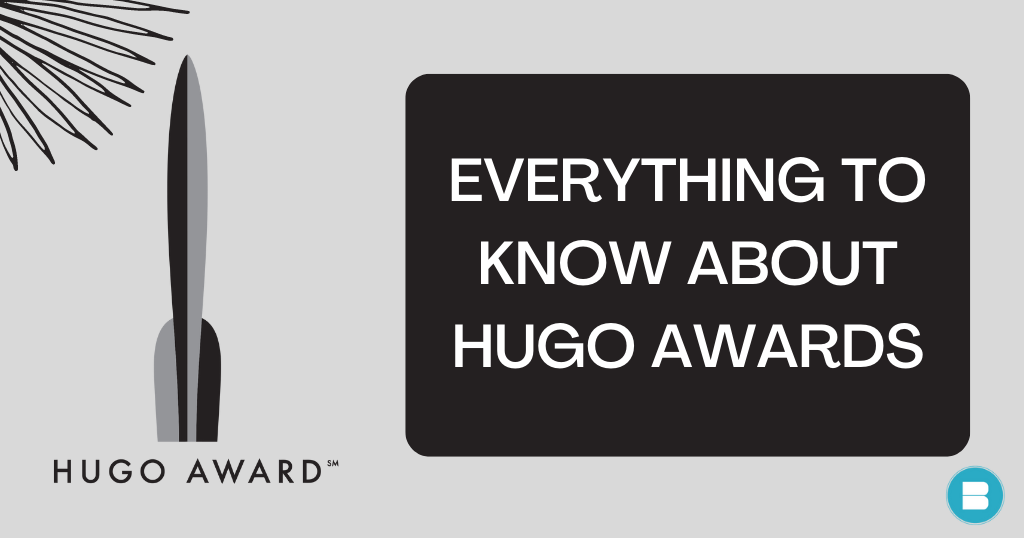
Hugo Award: Winners 2022, Nomination Process, History
Awarded during the World Science Fiction Convention and selected by its attendees, the Hugo Award is a yearly literary honour presented to the greatest science fiction or fantasy writing from the previous year. The Hugo is frequently cited as the top honour in science fiction. The World Science Fiction Society is in charge of administering the prize. Read: List of 10 Most popular movies based on books. It bears Hugo Gernsback’s name, who founded the groundbreaking science fiction publication Amazing Stories. Hugo awards have been granted annually since 1955, beginning with the 11th World Science Fiction Convention in 1953. How Hugo Awards were started – History At the 11th Worldcon in Philadelphia in 1953, the inaugural Hugo Awards were given out in seven different categories. Although the organisers intended that succeeding conferences would also offer them, the honours given that year were initially planned as a one-time event. At the time, Worldcons had no inter-year supervision and were entirely managed by their various committees as autonomous events. As a result, there were no requirements for repeating the prizes at any future conventions and no guidelines for doing so. The Best Series category, which was added as a new permanent category in 2018, had previously been a special Hugo Award before being approved at the annual business meeting. The Best Art Book Special Hugo Award was presented in 2019, however it was neither continued or added as a permanent category. A unique Hugo award for video games was presented at the 2021 Hugo Awards. A suggestion for a “Best Game or Interactive Experience” category is being considered by the Hugo Study Committee in preparation for a possible submission to the 2022 convention. Nomination Process for Hugo Awards Everyone who attended the most recent Worldcon or the one before is eligible to submit a nomination for a Hugo Award. This implies that the “jury” is typically made up of a large number of persons. Even if you could, you shouldn’t send your work to every single one of them. The Hugo Award has no nomination process. Read: Learn how to publish a book and become a bestselling author There is no entry or submission cost. The Hugo voters are skilled at identifying and nominating wonderful works, and they do communicate among themselves, which helps the word get out. Additionally, there are independent websites where anyone can suggest candidates for Hugo Awards. Hugo Award Winners 2022 The 80th WorldCon, this year known as ChiCon, in Chicago, Illinois, hosted a ceremony on September 4th to reveal the 2022 Hugo Award winners. Authors Charlie Jane Anders and Annalee Newitz served as the event’s hosts. There were following winners in these categories: BEST NOVEL- A Desolation Called Peace by Arkady Martine (Tor Books), BEST NOVELLA- A Psalm for the Wild-Built by Becky Chambers (Tordotcom Publishing), BEST SERIES- Wayward Children by Seanan McGuire (Tordotcom Publishing), BEST GRAPHIC STORY OR COMIC- Far Sector by N.K. Jemisin, art by Jamal Campbell (DC Comics), LODESTAR AWARD FOR BEST YOUNG ADULT BOOK- The Last Graduate by Naomi Novik. Hugo Award Winners 2022 Read: List of most prestigious literary awards in 2022. The Hugo Awards, the highest honour in science fiction, were originally given out in 1953 and have been given out annually since 1955. The members of the World Science Fiction Convention, also known as WorldCon, choose the winners, who are either individuals or works from the previous year. BlueRose Publishers have an award called BlueRose Awards for the authors who publish with us. Regardless of their genre, language, or geographic location, the prize aspires to recognise significant literary luminaries in the world of literature. The goal of the BlueRose Book Awards is to honour authors who have consistently worked to improve society. The goal of BlueRoseONE is to bring together under one roof the many true stories of well-known and up-and-coming authors. This area will provide readers and writers with a platform to explain and investigate the various shades of an author’s journey.
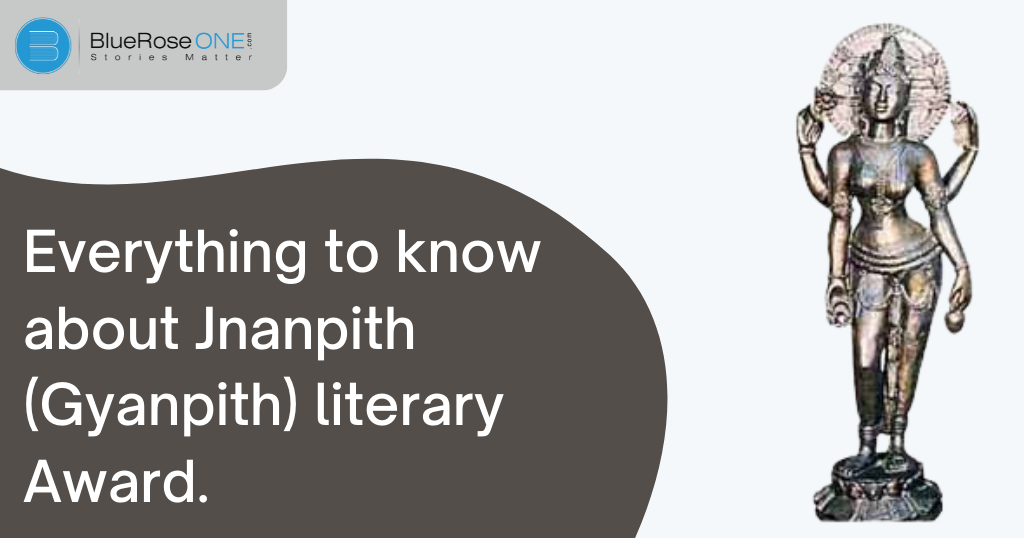
Jnanpith Award: Winners, Nomination Process, History
The Bharatiya Jnanpith award (Gyanpith award) annually presents an author with the Jnanpith Award, the highest and oldest literary honour in India, in recognition of their “great contribution to literature.” The Jnanpith award, which was established in 1961, is exclusively given to Indian authors who write in English and one of the Indian languages listed in the Eighth Schedule to the Constitution of India. Posthumous recipients are not eligible. Complete history behind Jnanpith (Gyanpith) Award The idea to launch a program “commanding national prestige and of international standard” to “select the best book out of the publications in Indian languages” originated in May 1961 at the Bharatiya Jnanpith, a research and cultural institution founded in 1944 by industrialist Sahu Shanti Prasad Jain of the Sahu Jain family. A few literary specialists were invited by Rama Jain, the founder of the Bharatiya Dnyanpith, later in November to discuss various components of the plan. Rajendra Prasad, the then-President of India, who had expressed interest in the implementation of the system, was given the first draft. The concept was also brought up during the 1962 annual meetings of the Bharatiya Bhasha Parishad and the All India Gujarati Sahitya Parishad. Read: Learn how to write and publish an action fiction book For the first award, works that were released between 1921 and 1951 were taken into consideration. The board would receive nominations from the nine established language committees along with translations of the work into Hindi or English. Four authors participated in the final round: Viswanatha Satyanarayana (Telugu), D. V. Gundappa (Kannada), Kazi Nazrul Islam (Bengali), and G. Sankara Kurup (Malayalam). At a ceremony conducted at Vigyan Bhavan in Delhi on November 19, 1966, Kurup received the citation, a statue of Saraswati, and a check for one lakh rupees (equal to 51 lakh rupees or $64,000 in 2020). Kurup praised the new award’s idea and complimented it for fostering “integration of the varied people of this nation on a spiritual level” in his acceptance speech. How to get nominated for Jnanpith (Gyanpith) Awards. Universities, numerous literary and linguistic organisations, instructors, reviewers, and other literary specialists all submit nominations for the award. For each of the languages, an advisory council is established every three years. For the next two years, the language of the most recent recipient’s work is ineligible for consideration. Three literary critics and linguists from each committee represent their respective languages. The committee reviews each nominee, and it then makes recommendations to the Jnanpith Award Selection Board (Pravara Parishad). Read: List of top 10 book clubs in Pune that everyone should join The Selection Board is made up of seven to eleven “high repute and integrity” individuals. Each member of the committee serves a three-year term that may be renewed for two more periods. The board evaluates the proposals of all language advisory committees based on full or incomplete translations of the chosen literature of the suggested authors into Hindi or English. The Selection Board, which has ultimate discretion in selection, makes the announcement of the recipient for a specific year. Jnanpith Award Winner 2022 Damodar Mauzo is a Goan author, short story writer, critic, and Konkani screenplay writer. For his book Karmelin, he received the Sahitya Akademi Award in 1983. For his book Tsunami Simon, he received the Vimala V. Pai Vishwa Konkani Sahitya Puraskar in 2011. Jnanpith Award is one of the most prestigious and oldest literary award in India. It’s aim is to recognise literary talents across several languages in India. A monetary award, a certificate, and a bronze statue of Vagdevi (Saraswati), the goddess of learning, come with the honour. The cultural institution Bharatiya Jnanpith is funding it. Damodar Mauzo Jnanpith Award Winner 2022 Read: List of most prestigious literary Awards in 2022. BlueRose Publishers have an award called BlueRose Awards for the authors who publish with us. Regardless of their genre, language, or geographic location, the prize aspires to recognise significant literary luminaries in the world of literature. The goal of the BlueRose Book Awards is to honour authors who have consistently worked to improve society. The goal of BlueRoseONE is to bring together under one roof the many true stories of well-known and up-and-coming authors. This area will provide readers and writers with a platform to explain and investigate the various shades of an author’s journey.
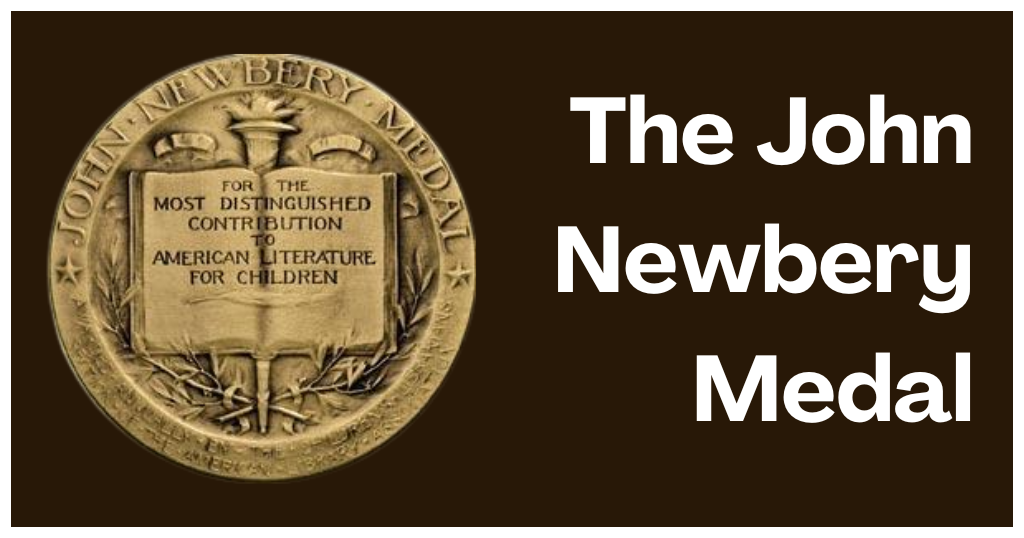
John Newbery Medal: Winners, Nomination Process, History
The Association for Library Service to Children (ALSC), a branch of the American Library Association (ALA), bestows the John Newbery Medal, sometimes known as the Newbery, to the author of “the most remarkable contributions to American literature for children.” The Caldecott Medal and the Newbery Medal are regarded as the two highest honours in American children’s literature. How John Newbery Medal was Started – History At the American Library Association’s annual session on June 22, 1921, the Newbery Medal was created (ALA). Children’s librarians in attendance enthusiastically endorsed the concept, which was put out by Publishers Weekly editor Frederic G. Melcher, and the ALA Executive Board later accepted it. Read: List of 10 successful Self-Published Authors who chose Self Publishing The ALA was responsible for managing the award from the beginning, although Melcher contributed money to cover the cost of the medal’s creation and design. Taking into account works released in 1921, the Newbery Medal was established in 1922. Melcher and the ALA Board decided to create the prize, according to The Newbery and Caldecott Awards, for a number of reasons that involved children’s librarians. They sought to support the publication of excellent, imaginative children’s books and to show the general public that children’s books merit appreciation. How to get nominated for Newbery Medal Members of the committee are chosen to represent a range of libraries, educators, and book reviewers. They read the books independently before meeting twice a year to have private talks. Any book that meets the requirements is eligible; it need not have received a nomination. The Newbery Award is given to the “author of the most distinguished contribution to American children’s literature published in the United States in English during the preceding year” by an American publisher. The American Library Association’s Midwinter Meeting, which takes place in January or February, is where the Newbery Award winners are revealed. Read: List of 10 most popular classic children’s story book of all time A subset of the runners-up on the final ballot, either the top runners-up on that ballot or the top runners-up on a separate ballot that omits the winner, must comprise the Honor Books. Winners are contacted via phone just before the award is announced, and the committee votes in secret. K. T. Horning of the Cooperative Children’s Book Center at the University of Wisconsin-Madison suggested to ALSC in 2015 that previous deliberations of the Newbery and Caldecott awards be made public in order to aid historians and academics. Both past committee members and renowned authors supported and criticised this proposition. John Newbery Award Winners 2022 In 2022, Donna Barba Higuera was awarded John Newbery Award for her book The Last Cuentista. An American author of children’s books is Donna Barba Higuera. Lupe Wong Won’t Dance, her first book, was a PNBA and Pura Belpré Award finalist in 2021. The Last Cuentista is a dystopian tale for middle grade readers. The Newbery Honor was established as the first ever children’s book award. Its guidelines and lengthy history continue to make it the most prestigious and widely talked-about children’s book prize in this nation. John Newberry Award Winner 2022 – Donna Barba Higuera Read: List of Most Prestigious Literary Awards in 2022 BlueRose Publishers, too, have an award called BlueRose Awards for the authors who publish with us. Regardless of their genre, language, or geographic location, the prize aspires to recognise significant literary luminaries in the world of literature. The goal of the BlueRose Book Awards is to honour authors who have consistently worked to improve society. The goal of BlueRoseONE is to bring together under one roof the many true stories of well-known and up-and-coming authors. This area will provide readers and writers with a platform to explain and investigate the various shades of an author’s journey.
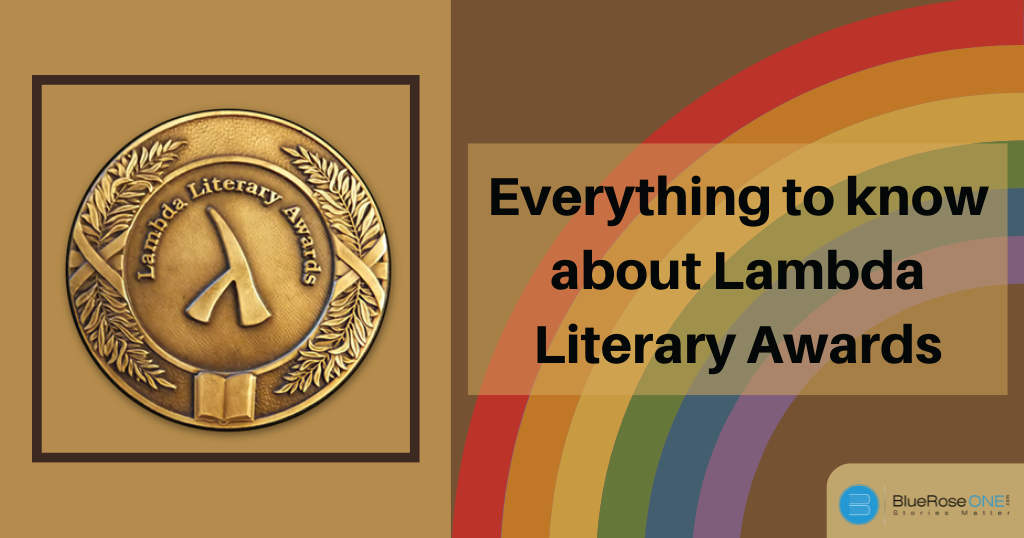
Lambda Literary Awards – Winner, Nomination Process, History
The Lambda Literary Awards, sometimes referred to as the “Lammys,” are given out annually by Lambda Literary to celebrate the significant impact LGBTQ writers have on society. The Lammy Awards honour the best LGBTQ literature. The prizes were established in 1989. How Lambda Awards Took Place – History L. Page (Deacon) Maccubbin, the proprietor of Lambda Rising Bookstore in Washington, DC, released the inaugural Lambda Book Report in 1987, which helped LGBTQ novels gain critical acclaim. This was the beginning of Lambda Literary Awards. Read: Calculate how much will it cost to publish a book in India. In 1989, the Lambda Literary Awards were established. At that first gala, notable authors including Paul Monette (Borrowed Time), Dorothy Allison (Trash), Allan Hollinghurst (The Swimming Pool Library), and Edmund White were recognised (The Beautiful Room is Empty). Early on, the Awards’ goal was to recognise and honour the greatest lesbian and gay publications that year they were published. Through a network of vibrant lesbian and gay publishers and bookshops that were springing up all over America, the Awards brought national prominence to a body of writing that had already made a strong but still-emerging beachhead. The Lambda Literary Awards ceremony has routinely drew attendees from all areas of publishing since it first began. Since the very first year, the Lambda Literary Awards have made it clear that lesbian, gay, bisexual, and transgender stories are a part of the literature of the country by spanning a wide variety of categories and reflecting the diversity of LGBTQ novels. The first time the awards were livestreamed globally was in 2021. How to get nominated for Lambda Literary Awards. Lambda uses the phrase “LGBTQ+” to refer to a wide range of identities, including two-spirit, intersex, pansexual, aro/ace, and others. This means that works that reflect identities other than lesbian, gay, bisexual, transgender, queer, or questioning are also acceptable. Judges for the Lammy Awards are appointed in the autumn. With certain exceptions based on the anticipated volume of submissions, these panels normally have three judges per prize category. Interest, availability, affinity for the designated category, and familiarity with the industry are some of the criteria used to choose judges. Read: List of most prestigious literary awards in 2022 The Lammy Award nominees are announced in the spring of the award year, and they are honoured in June at the award ceremony. The prized Lambda Literary Award sticker for the covers of the winning book is given to the winners, together with a certificate and a place in Lambda’s long tradition of recognising LGBTQ literary greatness. Lambda Literary Awards Winners Lambda Literary announced the winners of the 34th Annual Lambda Literary Awards on June 11 at a live virtual ceremony hosted by Raquel Willis. Winners include Brian Broome, for Punch Me Up to the Gods (Mariner); Lee Lai, for Stone Fruit (Fantagraphics); Aurielle Marie, for Gumbo Ya Ya (University of Pittsburgh Press); Brontez Purnell for 100 Boyfriends (MCD); Sarah Schulman for Let the Record Show (FSG); and Jeanne Thornton for Summer Fun (Soho Press). The Lambda Literary Awards (also known as “Lammys”) have proudly celebrated colourful, dynamic LGBTQ stories for more than 30 years. The Lammy Awards, which recognise more than 150 LGBTQ authors in 24 categories, offer a number of monetary awards to writers at various stages of their careers. Lambda Literary Award Winner – Brian Broome Read: Eager for writing? Learn how to start a career in writing in easy steps. BlueRose Publishers have an award called BlueRose Awards for the authors who publish with us. Regardless of their genre, language, or geographic location, the prize aspires to recognise significant literary luminaries in the world of literature. The goal of the BlueRose Book Awards is to honour authors who have consistently worked to improve society. The goal of BlueRoseONE is to bring together under one roof the many true stories of well-known and up-and-coming authors. This area will provide readers and writers with a platform to explain and investigate the various shades of an author’s journey.

